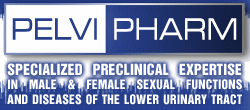Female sexual dysfunction (FSD) in post-menopausal women
Human disorder:
According to Master and Johnson (1966), the female sexual response consists of four successive phases: excitement, plateau, orgasm and resolution. In 1979, Kaplan proposed the aspect of sexual desire and the three-phase model consisting of desire, arousal and orgasm. Female sexual dysfunction (FSD) can affect each of these sexual response phases in both pre- and post-menopausal women. FSD is a highly prevalent disorder and increases at the time of menopause. During the peri- and the post-menopause periods, women may suffer from hypoactive sexual desire disorder (HSDD), sexual arousal disorder (FSAD) associated with lubrication difficulties, orgasm disorder and sexual pain disorder associated with vaginal atrophy and dryness. Despite the high prevalence of these disorders, there are only limited medical tools for treatment of FSD or its subtypes. The hormonal replacement therapy has been commonly used to treat menopausal symptoms but induces serious adverse effects. Accordingly, more research in this field is highly necessary in order to develop alternative therapeutic agents for the treatment of FSD in menopausal women.
Experimental model:
Comparative studies have evidenced a lot of homologies between animal and human sexual behavior (Pfaus, 1996). In women, arousal may be separated into genital arousal (potency) and psychological arousal (libido, motivation). A similar distinction also exists in female rats, in which sexual activities are divided into proceptivity and receptivity (Beach, 1976). Receptivity refers to lordosis (a stereotyped reflex in response to a male mount and allowing male intromissions and ejaculations) but there is no counterpart for lordosis in women. In contrast, proceptive behaviors are highly analogous to women sexual desire and psychological arousal. There is also a considerable degree of similarity between rats and humans in neuroanatomical, neuroendocrine and neurochemical regulation of sexual activity (Pfaus et al., 2003). For these reasons, study of proceptive behaviors in ovariectomized non hormonally primed females is likely relevant to preclinically investigate the potential of compounds for the treatment of FSD in menopausal women.
Some tests have been developed to measure sexual motivation outside the context of copulation:
Other reliable and standardized behavioral tests allow the quantification of female sexual responses and the assessment of the effects of pharmacological agents on these responses. These tests can be performed in different experimental devices, chosen according to the goal of the study:
Gelez, H et al. J Sex Med (2010): 7(suppl 3):118 (ISSWSH 2010)

Links to applicable Experimental skills
- Administration routes / Regimen
- Behavioural Science
- Behavioural Science
- Confocal Microscopy
- Female sexual desire
- Female sexual response elicited by electrical neural stimulation
- Immunohistology
- Metabolic cages (diuresis, renal function, spontaneous micturition)
- Morphology
- Morphometry
- Neuro-anatomical tracing techniques
- Plasma / urine / tissue collection
- Protein expression and activity
- Spectrophotometric assays





















 Download this page in PDF
Download this page in PDF